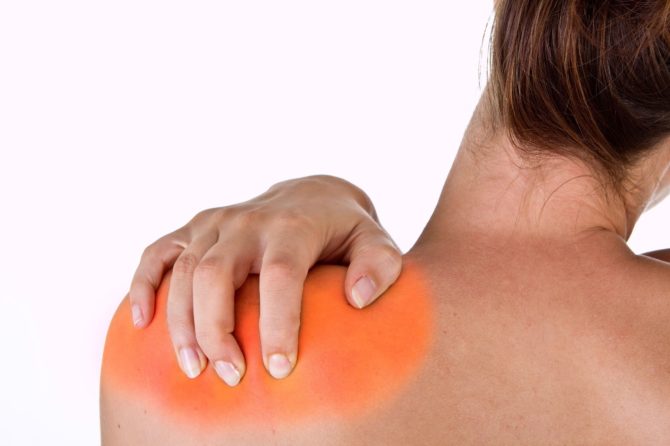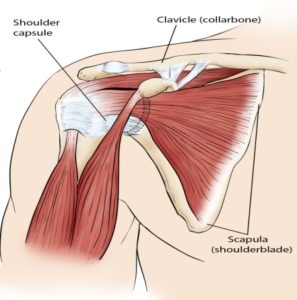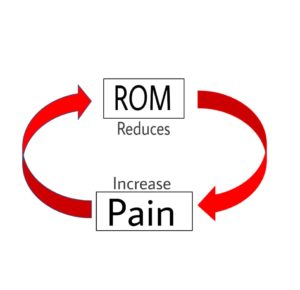
Frozen Shoulder – Symptoms, Causes, Diagnosis & Treatment options at Calicut
If you’re having a lot of pain, stiffness and trouble moving your shoulder. You may have a condition called frozen shoulder. It is also known as adhesive capsulitis or periarthritis shoulder. It usually occurs slowly over time, and it can limit the functional use of your arm and make it difficult to reach overhead to perform simple activities like combing hair etc..
Most commonly affects peoples between the ages of 40-60 yrs and occur in women than men. Females have difficulty reaching behind the back and Men have difficulty reaching into their back pocket to grasp their wallet and putting on a belt may be painful as well. In addition, people with diabetes are at an increased risk for developing frozen shoulder. Frozen shoulder is commonly confused with rotator cuff injury; it has a distinct pattern of symptoms resulting in severe shoulder pain, loss shoulder function and eventually stiffness.
The more precise medical term for frozen shoulder is adhesive capsulitis. In basic terms, it means that your shoulder pain and stiffness is a result of shoulder capsule inflammation (capsulitis) and fibrotic adhesions that limit your shoulder movement.
ANATOMY
Your shoulder is made up of 3 bones that form a ball and socket joint. They are your upper arm (humerus), shoulder blade (scapula) and collarbone (clavicle). There is also a tissue surrounding your shoulder that holds everything together, this is called the shoulder capsule.
With frozen shoulder, the capsule becomes so thick and tight that it’s too hard to move. bands of scar tissue form and there’s less of liquid called synovial fluid to keep the joint lubricated. These things limit motion even more.


SYMPTOMS
Typically develops slowly, and in 3 stages. Each stage can last a number of months.
- Freezing stage
- Any movement of shoulder causes pain.
- Shoulder ROM starts to become limited.
- It slowly gets worse overtime and may hurt more at night.
- Typically lasts from 6 weeks to 9 months
- Frozen stage
- Pain may begin to diminish during this stage.
- Shoulder becomes stiffer and using it becomes more difficult.
- During the 4-6 months of frozen stage, daily activities may be very difficult.
- This stage can last 4-12 months.
- Thawing stage
- ROM of shoulder begins to improve.
- Complete return to normal or close to normal strength and motion typically takes from 6months to 2 years
CAUSES
Frozen shoulder occurs when the capsule thickens and tightens around the shoulder joint, restricting its movement.
RISK FACTORS
Certain factors may increase your risk of developing frozen shoulder.
- Age and sex
People with age of 40 and older, particularly women are more likely to have frozen shoulder.
- Immobility or reduced mobility
This results from many factors;
- Rotator cuff injury,
- Broken arm.
- Stroke
- Recovery from surgery.
- Systemic diseases
Disease that might increase the risk includes;
- Diabetes
- Hyperthyroidism
Hypothyroidism - Cardiovascular diseases
- Tuberculosis
- Parkinson’s disease
PREVENTION
If you had an injury that makes it difficult to move your shoulder, talk to your doctor about exercise you can do to maintain ROM in your shoulder joint.
DIAGNOSIS
Physical examination
- During physical exam, your doctor may ask you to move in certain ways to check pain and evaluate your active ROM. Your doctor might then ask you to relax your muscles while he or she moves your arm (PROM).
- Frozen shoulder affects both active and passive ROM.
- Frozen shoulder has a distinct capsular pattern of stiffness: lateral rotation> flexion> internal rotation.
Imaging tests
- X-ray
- MRI
Management
General management
- Hot pack
- Passive range of motion maintenance
- Active range of motion exercise
- Stretches
- Strengthening
Physical therapy management
We MOVEAZE offer an advanced management for Shoulder capsulitis
Evidence based techniques gives you an immediate relief from the shoulder problem
Click here to take an appointment.

LETS MOVE TO REDUCE YOUR PAIN
Myotherapy
Mobilization
Proprioceptive training etc.
Leave a reply
A very helpful post to understand the reason behind the frozen shoulder, methods of treatment. Thank you for sharing the post.
ReplyDdPZndGARVvlExYhiLCN
ReplyYJQPkQuKRvZtFqpiLHWpXddP
Reply